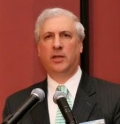 The rise of The Church of Jesus Christ of Latter-day Saints (LDS or Mormon Church) is an incredible story of a persecuted Christian offshoot that has grown to become the most successful, new global religion in the 14 centuries since Islam. It boasts 4.5 million active members worldwide (15 million recorded), and the church itself is estimated to be worth $40 billion. Its membership has included a 2012 U.S. presidential candidate.
The rise of The Church of Jesus Christ of Latter-day Saints (LDS or Mormon Church) is an incredible story of a persecuted Christian offshoot that has grown to become the most successful, new global religion in the 14 centuries since Islam. It boasts 4.5 million active members worldwide (15 million recorded), and the church itself is estimated to be worth $40 billion. Its membership has included a 2012 U.S. presidential candidate.
All this membership, wealth, and a permanent footing in mainstream consciousness was achieved within a 185 years of its founding. This is a monumental achievement. Rodney Stark, a highly regarded sociologist of religion, declared this ascent to be “one of the great events in the history of religion.”
In contrast, the Holy Spirit Association for the Unification of World Christianity (Unification Church) is a new faith experiencing difficulties in all these areas. Currently, the church finds itself in much turmoil in areas such as finances, leadership and growth. If the Unification Church is to survive and grow, changes need to be implemented.
It is fortunate for the Unification Church that the Latter-day Saints have proved it possible for a new religion to find success globally, bucking declining trends experienced by other Christian sects. Many studies of the Church of the Latter-day Saints have attempted to explain its enviable growth. Let’s consider ways the Unification Church might attempt to replicate its success.
To begin with, the development of the two faiths are strikingly similar. A charismatic leader raised in the Christian faith started a new religion upon experiencing a supernatural vision. After initial growth and success, both their fledgling churches experienced severe persecution from their communities, and the founders were jailed several times during their ministries. And now, the factionalism that Unification Church is experiencing soon after the death of its founder is eerily similar to the “Succession Crisis” experienced by the Mormons following the assassination of its founder.









Recent Comments